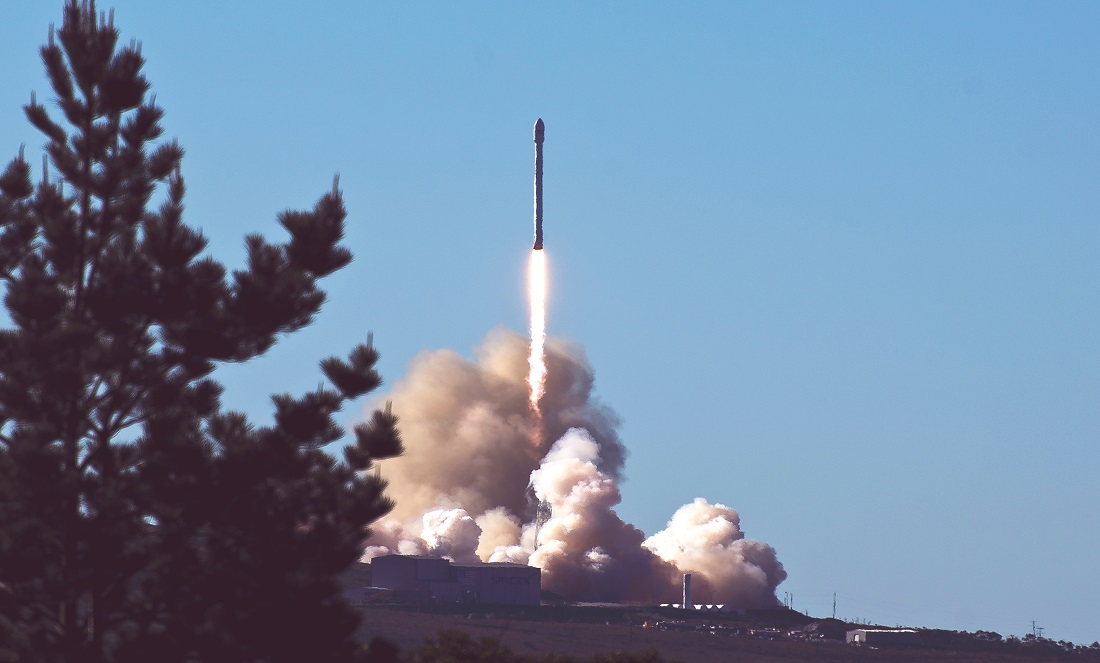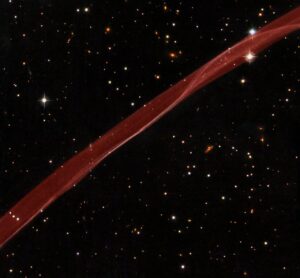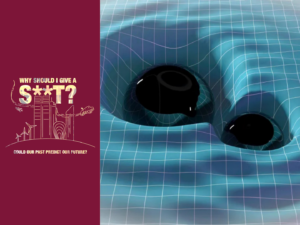When it comes to getting off the Earth, rockets are just about our only option.
They’re the only thing powerful enough to pull a spaceship out of Earth’s gravity. They release their energy quickly but not efficiently.
Once we’re in space, though, the maths changes.
Away from gravity, the atmosphere and anything else that can slow us down, we have a few more options.
Going nuclear
Regular rockets get their energy by burning fuel and oxygen. It’s fire—exactly the same reaction humans have been using to heat things up for thousands of years. One idea proposed in the 1960s is to use a nuclear reactor instead.
Rather than riding a jet of exploding fuel, a nuclear rocket would use the heat and pressure generated in a nuclear reactor. On Earth, this pressure is used to spin a turbine and create electricity, but in space, it would be directed out the back of a spacecraft to push it forwards.
NASA is looking into nuclear rockets as a faster way to get humans to Mars. Current spacecraft get one big kick to send them on their way and coast to their destination. A nuclear rocket could run continuously, accelerating all the way and potentially cutting travel time in half.
Nuclear engines are efficient, but they still need fuel. What if there was a way to travel through space without using any fuel at all?
Electric dreams
Our planet is surrounded by a magnetic field. It’s powerful enough to spin even the tiny magnet in a compass needle. Make that compass needle bigger and put it in space, and you’ve got an electrodynamic tether.
Electrodynamic tethers move through space using electromagnets to change their magnetic field. Charge it so it opposes Earth’s field, and you speed up. Put it in reverse, and you slow down. This technique is already being investigated for use on satellites—but what about travelling beyond Earth’s magnetic field?
Without air resistance or fuel limits, a spinning space tether could build up some serious momentum. Attach a spacecraft to one end and release it when it’s pointing the right way, and your space tether is suddenly a space catapult.
Catching a gravity wave
No matter how efficient we make our engines though, there’s one limit we can’t break—the speed of light. The closer any spacecraft gets to the speed of light, the more energy it takes to increase its speed. Reaching the speed of light, even if it were possible, would take an infinite amount of power.
The strangest spacecraft designs are the ones that try to bend this speed limit. One idea proposes stretching space itself out ahead of the ship and bunching it up behind, like a warp drive in a sci-fi movie. The spacecraft never actually breaks the speed of light, but the wave of bent space it’s surfing on theoretically could, pulling the spacecraft with it.
The only problem is that this engine needs a type of matter with negative mass—a substance whose gravity pushes rather than pulling. If that sounds like it breaks the laws of physics, that’s because right now it does. Making this kind of matter may well prove impossible.
Down to Earth
Most of these ideas are just that—ideas. For now, we’re probably stuck with rockets, not nuclear space catapults and impossible substances. But hey, less than a hundred years ago, any kind of space travel seemed just as absurd. If there’s one thing we know for sure, it’s that you never know for sure what the future will hold.
For more weird and wonderful futuristic spacecraft, check out the Faster Than Light show now playing in the Scitech Planetarium every day until April. Check the daily what’s on for tickets and show times.









